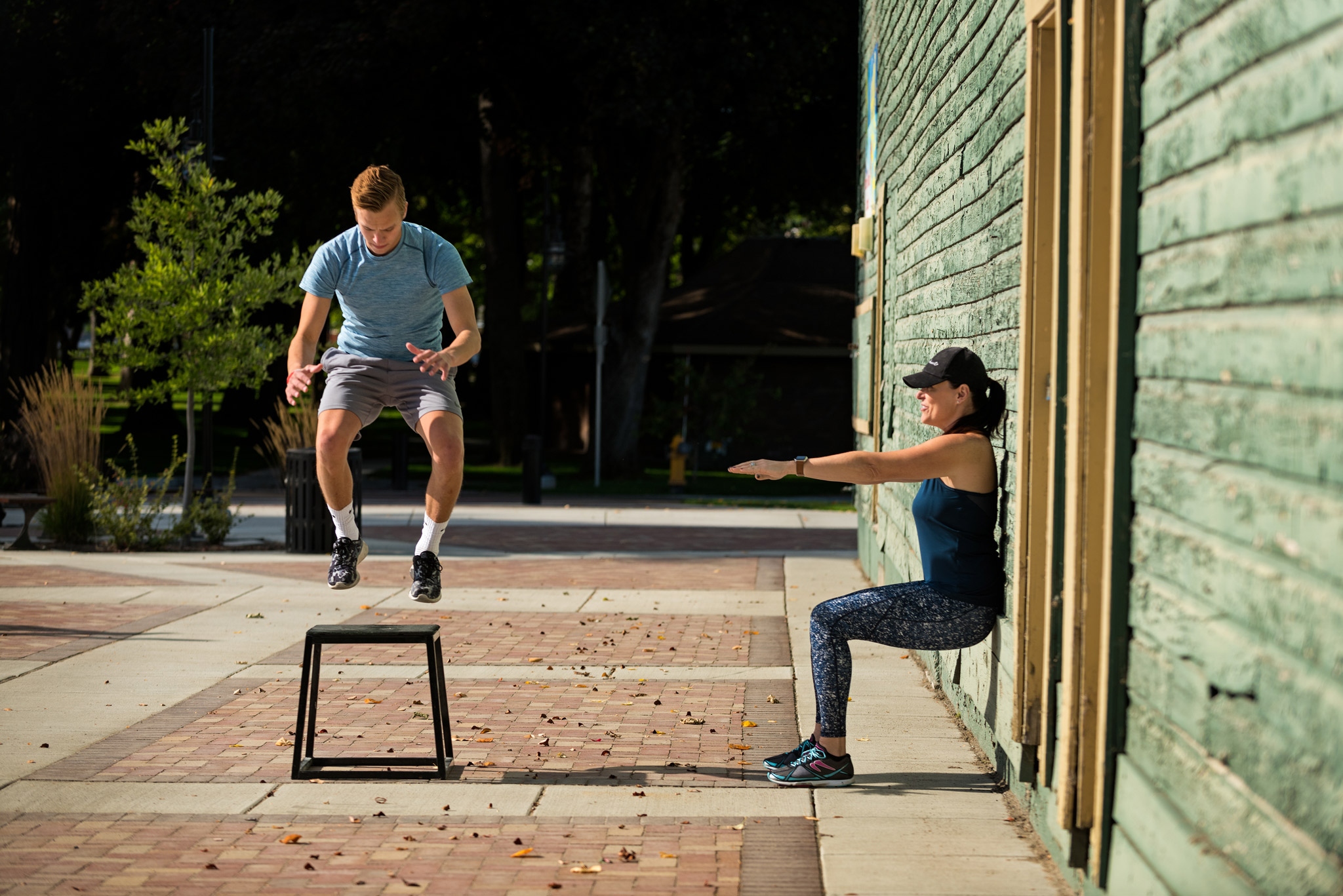If you live in the Northwest, you probably enjoy a variety of winter sports. Whether you downhill ski, snowboard, skate ski, cross country ski, snowshoe or ice skate, winter offers several activities you can enjoy.
Unfortunately, with these activities injury and accidents can occur. Even just a simple fall on the ice can cause serious injury. Getting in shape for winter sports can reduce that risk and increase your fitness level during the process.
Winter activities require having a strong muscle base, balance and plyometric ability along with a good cardiovascular fitness base. As a person who has lived in the northwest most of her life, I have experienced many of these winter activities.
As I have aged, preparing for winter activities has helped keep me safe and also aided in delayed-onset muscle soreness. Exercising and preparing in advance is key. The goal is to effectively train the proper muscle groups for your sport in order to reduce the risk of injuries to hips, knees, ankles and even shoulders. The main muscles used in winter sports include:
» Core, which aids in balance.
» Hamstrings, which aid in flexion.
» Quadriceps, which extend the knee and flex the hip.
» Hip and gluteal muscles, which aid in hip extension.
» Feet and ankles, which aid in support and balance.
Each winter sport uses muscles differently. Some sports are more plyometric and strength based, such as downhill skiing and snowboarding. Whereas other sports are endurance, strength and cardio based such as cross country or skate skiing. So you can tailor the workouts to be more sport specific. Here is a great overall workout for winter sports in general. Modify any exercises you feel are inappropriate for your fitness level.
Story continues after a quick message from our sponsor below.
Exercise for the winter generalist
Three rounds of eight exercises 1 minute each or 30 seconds each leg. Rest for 15-30 seconds between each minute.
» Wall sit with arms extended.
Place back against wall in sitting position with feet shoulder-width apart slide and feet slightly away from you, so when you slide into a squat the knees are not over toes. Hold arms straight out.
Lateral step up.
Using a bench or solid chair, step with one leg from the side and make sure to push through your whole foot, not just toes.
» Skaters.
Step or jump laterally. Lean slightly forward and jump right. Bring left foot behind you and left arm in front. Jump the left and bring right foot behind and right arm in front. Repeat this side to side for 1 minute.
» Step back lunges.
Alternate legs and step back into a lunge position with upper body straight, shoulders relaxed and knees bent evenly. Lower your hips and keep front knee from passing your toes.
» Box jumps or squat jumps.
If you have something strong to jump on and feel safe try it, otherwise squat jumps are a great alternative. Remember, when jumping try to absorb the force of the landing using muscles not joints.
» Single leg calf raise.
Balance on one leg and press through toes up and down without letting the heel touch. Switch legs.
» Planking side to side.
Push-up position, weight on hands and toes with back straight. Feet stay planted and only arms move. Step with right hand to right and back to center, then left hand does the same. Keep repeating. If too challenging, just hold the plank.
» Single leg bridge.
Lie on your back with arms by your sides, knees bent and feet flat on floor. Raise one leg and drop and lift hips as high as you can. If single leg is too difficult use both legs. N
By Diana Okon
Photography By Joel Riner
As Featured In: 2019 Winter/Spring SPO Edition



